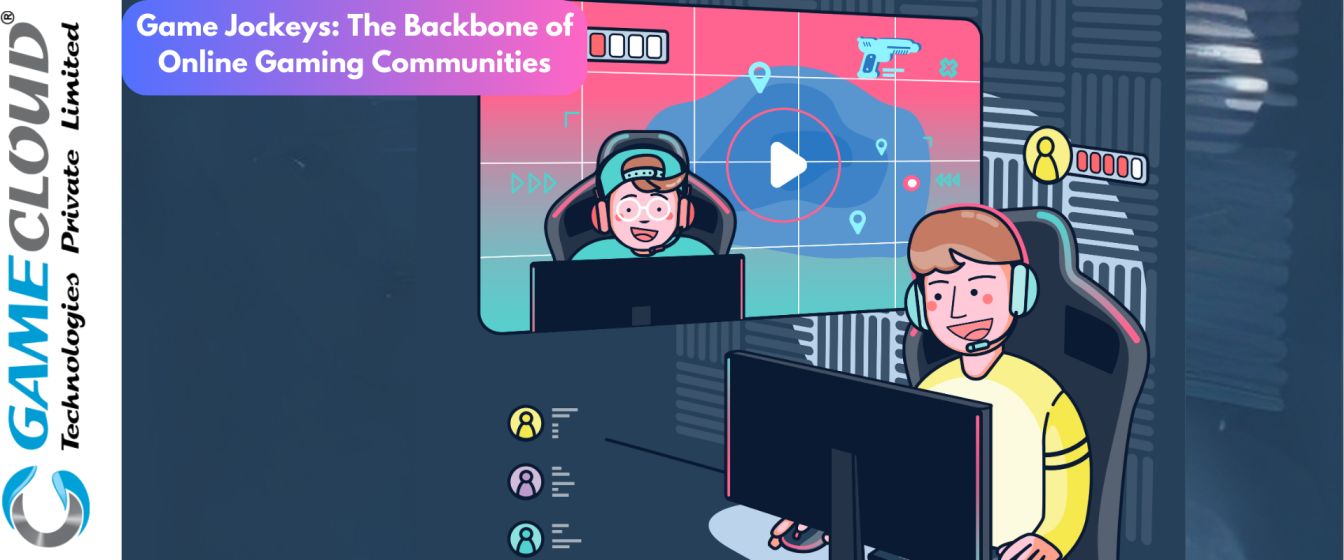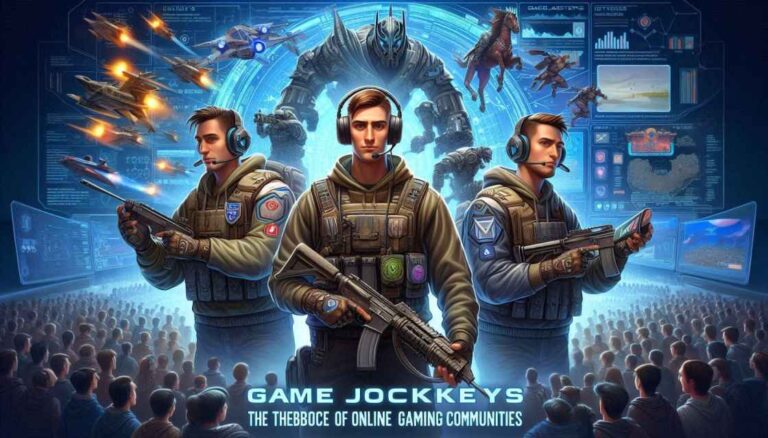
In the ever-expanding universe of online gaming, where immersive virtual worlds and competitive landscapes captivate millions, a specialized cadre of professionals has emerged to bridge the gap between novice players and seasoned veterans. These individuals, known as Game Jockeys (GJs), serve as the linchpins of player engagement, retention, and community growth. Operating at the nexus of gameplay mastery, social facilitation, and strategic promotion, Game Jockeys are redefining the onboarding and sustainment processes for online games across diverse genres and platforms.
The role of a Game Jockey transcends mere gameplay proficiency; it encompasses a multifaceted skill set that combines technical expertise, interpersonal acumen, and a deep understanding of game mechanics and social dynamics. As online gaming ecosystems grow more complex, with intricate progression systems, vast multiplayer environments, and high-stakes competitive scenes, the demand for GJs has surged. These professionals are tasked not only with acclimating new players to game fundamentals but also with cultivating an atmosphere of camaraderie, excitement, and continuous engagement that transforms casual participants into dedicated community members. The impact of Game Jockeys on player retention rates, in-game purchases, and overall game longevity has prompted developers and publishers to integrate GJ programs as core components of their live service strategies.
Technical Mastery and Skill Transfer Protocols
Game Jockeys must attain an elite level of gameplay proficiency before they can effectively guide others. This involves not only achieving high ranks or completion rates within the game but also understanding optimal strategies, meta-shifts, and advanced techniques that may not be immediately apparent to newcomers. GJs often undergo rigorous training programs that assess their abilities across various in-game scenarios:
- Speedrunning Benchmarks: Many GJs are required to complete main storylines or key quest chains within specific time frames, demonstrating efficient navigation and resource management.
- APM (Actions Per Minute) Thresholds: In genres like Real-Time Strategy (RTS) or Multiplayer Online Battle Arena (MOBA), GJs may need to maintain a minimum APM, typically ranging from 150-300, showcasing their multitasking capabilities.
- Accuracy Metrics: For First-Person Shooters (FPS), GJs might be evaluated on criteria such as headshot percentage (often expected to exceed 40%) or precision scores in aim training modules.
Once mastery is achieved, GJs employ structured skill transfer protocols. These may include micro-session drills that break down complex manoeuvres into learnable segments, with GJs guiding players through each component before integration. VOD (Video on Demand) analysis is another critical tool, where gameplay is recorded to review with trainees, utilizing tools like frame-by-frame dissection and on-screen annotation to highlight decision-making processes. Moreover, GJs assist players in optimizing their control schemes through customized hotkey and macro setups, which can reduce input lag by up to 50 ms—a critical edge in high-level play.

Onboarding Funnels and Retention Algorithms
Game jockeys are instrumental in designing and executing onboarding funnels that systematically introduce new players to game elements while maintaining engagement. Key performance indicators (KPIs) for these funnels include tutorial completion rates, aiming for >90% completion, with GJs providing live support during crucial checkpoints. Time-to-first-achievement is another vital metric, as reducing this by guiding players to early wins can boost day-1 retention by up to 20%. The social connection ratio is equally important; ensuring that within the first 3 hours of gameplay, new users connect with at least 2-3 other players or join a guild/clan has been shown to increase long-term retention by an astounding 300%.
GJs also work with developers to refine retention algorithms that predict churn risk and trigger interventions. They monitor playtime velocity, watching for a decrease of >25% in daily active playtime, which often signals disengagement. Challenge scaling is another area of focus, where GJs help dynamically adjust difficulty or introduce GJ-led events when players encounter progression plateaus, maintaining a state of “flow.” When players do churn, GJs spearhead re-engagement campaigns, personally reaching out to lapsed users with tailored incentives. Combined with limited-time events, these efforts can recover up to 15% of churned players.
Community Architecture and Social Catalyst Strategies
Beyond individual guidance, game jockeys are pivotal in constructing vibrant community ecosystems that foster belonging and interdependence among players. Guild and clan incubation is a cornerstone of this effort, with GJs founding starter guilds that have low entry barriers. They nurture these groups until they reach a critical mass (usually 50-100 active members) before transitioning leadership, creating a self-sustaining social structure.
In-game economic facilitation is another crucial aspect of community building. By organizing regular trading sessions or crafting cooperatives, GJs help circulate resources and currency, to achieve a daily trade volume of at least 5% of the total player base. This economic activity not only enriches the game world but also creates interdependencies that strengthen social bonds.
Mentorship pipelines represent perhaps the most profound long-term community investment. GJs establish tiered support systems where veteran players, under GJ supervision, mentor newcomers. The impact is exponential; successful programs see mentees 200% more likely to become mentors themselves, creating a self-reinforcing cycle of knowledge sharing and social integration that can sustain a game community for years.
Competitive Ladders and PvP Ecosystem Development
For games with significant Player vs. Player (PvP) components, Game Jockeys play a crucial role in nurturing competitive scenes:
- Ladder Seeding: GJs often participate in early season matches to provide reference points for matchmaking algorithms, aiming for a starting Elo/MMR distribution with a standard deviation between 100-150 points.
- Tournament Incubation: Organizing weekly or monthly events with GJ oversight, gradually scaling prize pools from in-game rewards to cash prizes, targeting a year-over-year growth in participation of 50%.
- Shoutcasting and Analysis: Many GJs transition into commentating roles for high-profile matches, leveraging their expertise to elucidate high-level play for spectators, which can increase stream viewership by 35%.
Feedback Loops and Iterative Development Collaboration
As the players’ primary advocates, Game Jockeys establish robust channels for community input that directly inform the development process. They often serve on rapid response teams, acting as first responders to emerging issues. The mandate is clear: file detailed bug reports within 30 minutes of discovery, complete with replication steps and system data. This alacrity can mean the difference between a hotfix and a public relations crisis.
Public Test Realm (PTR) orchestration falls squarely in the GJ domain. Managing closed beta tests for upcoming features, they curate diverse player samples and aggregate feedback. The impact of structured PTR phases is stark, reducing critical issues at launch by up to 60%. Game Jockeys translate raw player experiences into actionable insights, bridging the gap between community desires and technical realities.
Sentiment analysis integration has become a cornerstone of the GJ’s community management arsenal. Working with sophisticated tools to track shifts in player mood across forums, social media, and in-game chat, they help contextualize spikes in negative sentiment. The GJ’s role is to differentiate between temporary frustrations and systemic problems, guiding developer priorities with the nuance that only deep community embedding can provide.

Cross-Platform Unification and Global Community Initiatives
As games expand across PC, console, and mobile, Game Jockeys tackle the challenge of unifying disparate player bases:
- Input Parity Workshops: Hosting sessions that bring together players from different platforms to develop strategies that don’t disadvantage any input method, crucial for titles implementing crossplay.
- Localization Ambassadors: GJs fluent in multiple languages often serve as cultural liaisons, ensuring that region-specific events resonate authentically and that translation issues don’t hinder international player interactions.
- Global Server Events: Coordinating simultaneous challenges across all regional servers, like world-first races or 24-hour charity streams, which can drive global concurrent player peaks 3-4x higher than normal.
GameCloud Technologies Pvt Ltd: A Pioneer in Game Jockeys Services
GameCloud Technologies Pvt Ltd has been a pioneer in offering Game Jockeys services for the last 15 years. Since its inception in 2011, the company has been dedicated to providing top-notch game testing and validation services to video game development studios and publishers across the globe. With a team of expert QA professionals and passionate gamers, GameCloud has established itself as a trusted partner for game development companies, ensuring the quality and smooth functioning of games across various platforms. Their services include game validation, QA, QC, tech support, automation, and game jockeys, which cater to the diverse needs of game development studios.
Conclusion: The Evolving Horizon for Game Jockeys
As online games continue to evolve from mere products into living, breathing services, the role of the Game Jockey stands at a fascinating inflexion point. These professionals have transcended their initial mandate of basic training and onboarding to become indispensable architects of player experience and community health. Their impact is increasingly quantifiable: games with dedicated GJ programs report churn rates 40% lower than industry averages, ARPU (average revenue per user) increases of 25-30%, and a doubling of average player lifespans.
Looking ahead, the trajectory for Game Jockeys points toward even greater specialization and influence. We may see the emergence of AI-assisted GJs, armed with machine learning algorithms that predict individual player needs and tailor interventions with unprecedented precision. The rise of the metaverse concept also hints at a future where Game Jockeys could become cross-title experts, helping users navigate not just single games but entire digital ecosystems.
What remains clear is that as long as there are virtual worlds to be mastered and communities to be forged, Game Jockeys will be there—the unseen hands guiding countless players from their first tentative steps to the thrilling heights of immersion and mastery that keep us all coming back for more.
